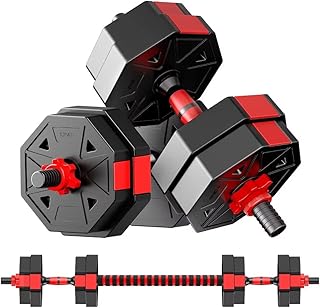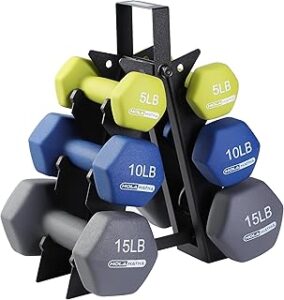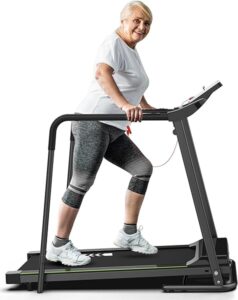Barbells are one of the most versatile and essential pieces of gym equipment, used in various strength training and weightlifting exercises. Whether you are a beginner or an advanced lifter, incorporating barbells into your workout routine can help improve muscle strength, endurance, and overall fitness. This comprehensive guide will explore different types of barbells, their benefits, exercises, and tips on choosing the right one for your needs.

BUY NOW
Benefits of Using Barbells
Barbell training offers several advantages, making it a staple in gyms worldwide.
1. Full-Body Strength Development
Barbells allow for compound movements that target multiple muscle groups simultaneously. Exercises like squats, deadlifts, and bench presses work the legs, back, chest, and arms, leading to overall muscle development.
2. Progressive Overload
With barbells, you can gradually increase the weight to challenge your muscles, leading to consistent strength gains. This principle of progressive overload is key to muscle growth and endurance improvement.
3. Versatility
Barbells can be used for a wide range of exercises, including Olympic lifts, powerlifting movements, and functional fitness workouts.
4. Stability and Balance Improvement
Lifting with barbells helps improve coordination, balance, and core strength. The symmetrical load distribution requires greater control, making stabilizing muscles work harder.
5. Cost-Effective Home Gym Option
For those building a home gym, a barbell with weight plates is a budget-friendly and space-saving alternative to multiple machines and dumbbells.
Types of Barbells
There are different types of barbells designed for specific workout styles and fitness goals.
1. Standard Barbells
These are typically 5 to 7 feet long with a thinner diameter and are used for general weight training. They are ideal for beginners and home workouts.
2. Olympic Barbells
Olympic barbells are 7 feet long and weigh around 20 kg (44 lbs) for men and 15 kg (33 lbs) for women. They have rotating sleeves to reduce wrist strain, making them suitable for Olympic weightlifting movements.
3. Powerlifting Barbells
Designed for heavy lifts such as squats, bench presses, and deadlifts, powerlifting barbells have a stiffer shaft with minimal flex to support heavier loads.
4. EZ Curl Bars
EZ curl bars have a zig-zag shape, making them more comfortable for arm exercises like bicep curls and tricep extensions by reducing wrist strain.
5. Trap Bars (Hex Bars)
These bars have a hexagonal shape and are used for deadlifts, shrugs, and farmer’s walks. They help maintain a more upright posture and reduce lower back strain.
6. Safety Squat Bars
These specialized bars come with padded shoulder supports and a cambered design, making squatting easier for those with mobility or shoulder issues.
7. Multi-Grip Bars
Also known as Swiss bars, these barbells have multiple grip options, allowing lifters to change hand positioning for reduced joint strain.
Best Barbell Exercises for Strength and Muscle Growth
Barbells allow for some of the most effective strength-building exercises. Here are key movements to include in your routine:
1. Squats
Squats are a fundamental lower-body exercise targeting the quadriceps, hamstrings, glutes, and core.
- How to do it:
- Stand with feet shoulder-width apart.
- Place the barbell on your upper back and engage your core.
- Lower into a squat, keeping your chest up and knees in line with your toes.
- Push back up to the starting position.
2. Deadlifts
Deadlifts build overall strength by engaging the posterior chain, including the hamstrings, glutes, and lower back.
- How to do it:
- Stand with feet hip-width apart, barbell over midfoot.
- Hinge at the hips and grip the bar with both hands.
- Lift the bar by extending your hips and knees.
- Lower the bar under control.
3. Bench Press
The bench press targets the chest, shoulders, and triceps, making it essential for upper-body strength.
- How to do it:
- Lie on a bench with your feet flat on the floor.
- Grip the bar slightly wider than shoulder-width.
- Lower the bar to your chest, then press it back up.
4. Overhead Press
This exercise strengthens the shoulders, triceps, and upper back.
- How to do it:
- Stand with the bar at shoulder height, gripping slightly wider than shoulder-width.
- Press the bar overhead, locking out your elbows.
- Lower the bar back to shoulder height.
5. Barbell Rows
Rows strengthen the upper back and improve posture.
- How to do it:
- Bend at the hips, keeping your back straight.
- Pull the barbell to your torso, squeezing your shoulder blades.
- Lower the bar under control.
6. Barbell Lunges
A great unilateral exercise to improve balance and leg strength.
- How to do it:
- Hold the barbell on your back.
- Step forward into a lunge, keeping your knee aligned with your foot.
- Push back to the starting position.
How to Choose the Right Barbell
When selecting a barbell, consider the following factors:
1. Weight Capacity
Ensure the barbell can handle the weight you plan to lift. Standard bars hold around 200 lbs, while Olympic bars can support over 1000 lbs.
2. Barbell Length
A 7-foot Olympic bar is best for heavy lifting, while shorter bars work well for home gyms and smaller spaces.
3. Knurling
Knurling provides grip support. Powerlifting bars have aggressive knurling, while Olympic bars have moderate knurling for comfort.
4. Sleeve Rotation
For Olympic lifting, look for bars with smooth sleeve rotation to prevent wrist strain.
5. Shaft Diameter
Standard bars are around 28-29mm thick. Powerlifting bars are slightly thicker for extra stiffness.
6. Coating and Durability
Chrome, zinc, and cerakote coatings offer protection against rust and wear.
Barbell Maintenance Tips
Proper maintenance will extend the life of your barbell and keep it in top condition.
1. Clean the Bar Regularly
Use a wire brush to remove chalk, dirt, and sweat to prevent rusting.
2. Lubricate the Sleeves
Apply lubricant to the rotating sleeves to ensure smooth movement.
3. Store Properly
Store the barbell horizontally on a rack or wall mount to prevent bending.
4. Avoid Dropping Unloaded Bars
Dropping an empty barbell can damage its integrity over time.
Conclusion
Barbells are an essential tool for strength training, offering endless workout possibilities. Whether you’re powerlifting, Olympic lifting, or doing general fitness workouts, choosing the right barbell can enhance your performance and safety. By understanding different types of barbells, performing effective exercises, and maintaining proper care, you can maximize your gains and achieve your fitness goals. Start incorporating barbell training into your routine today for stronger muscles, improved endurance, and a healthier body!


